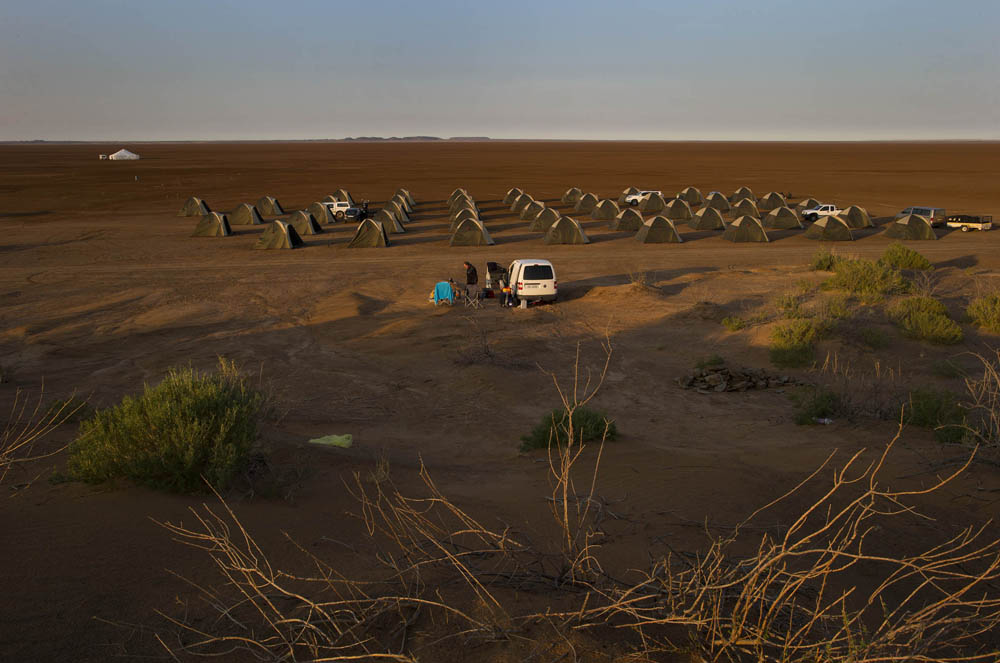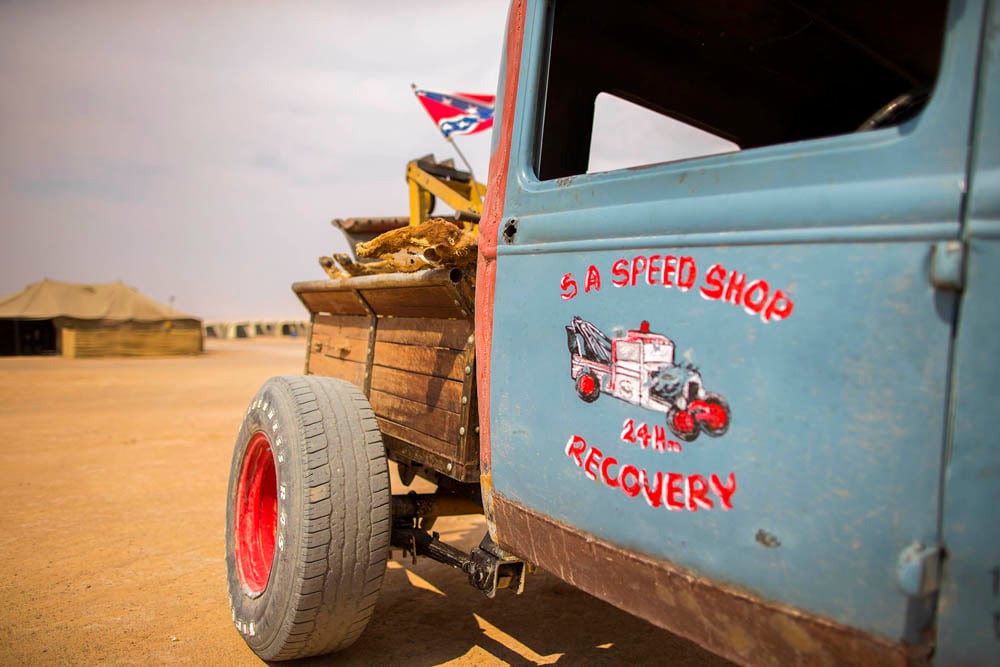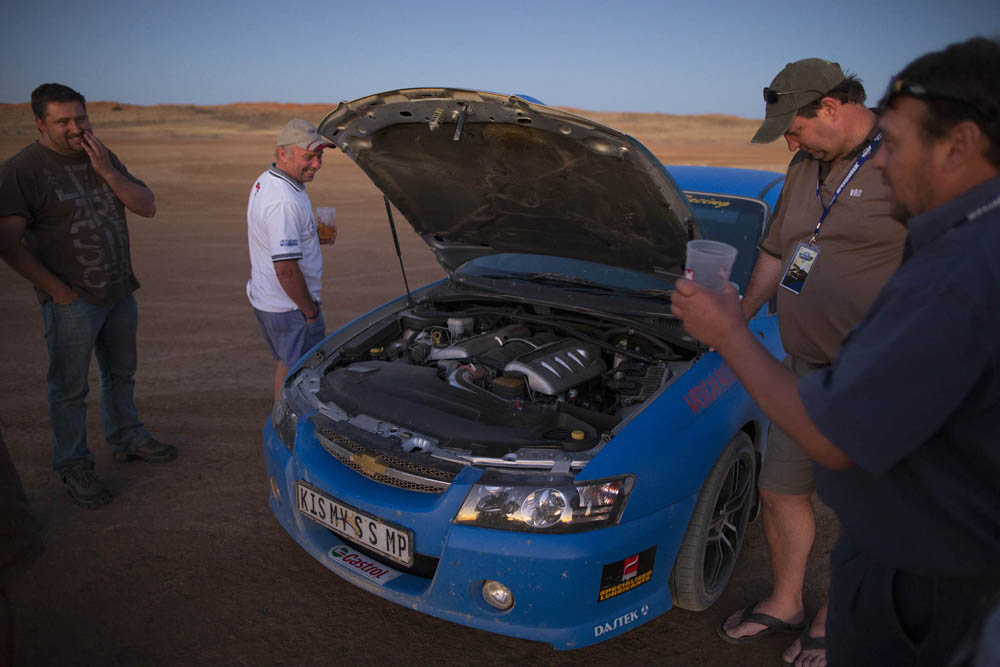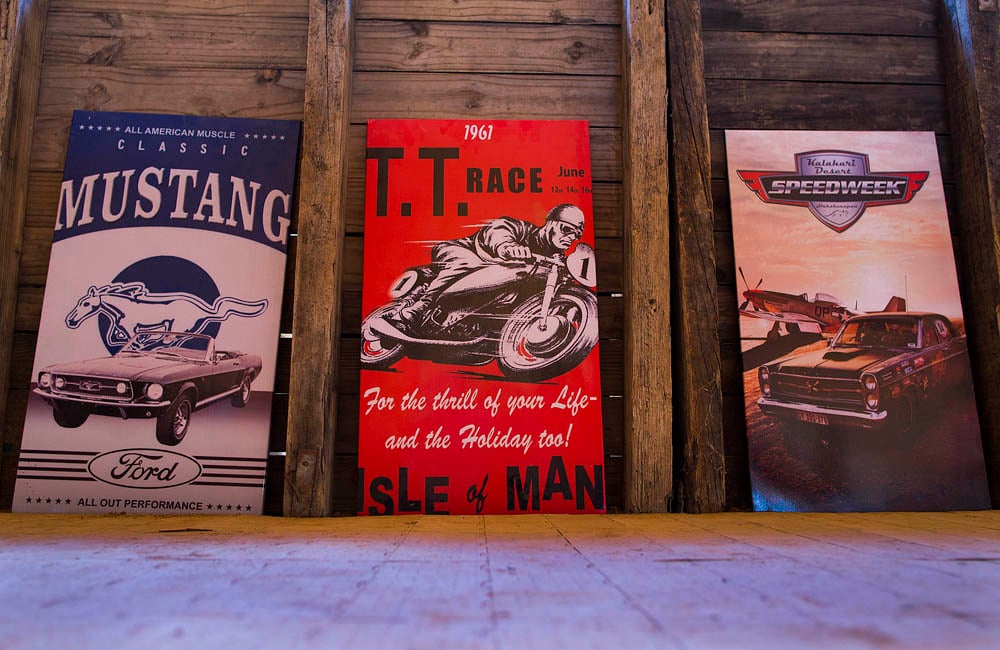Kalahari Speedweek is more than a showcase of tuned-up rides going full throttle
The caffeine started wearing off near Brandvlei. And, unlike Hunter S Thomson, I don’t do any other drugs, so I stopped for a top-up and to refuel. I’d been up since 4.30am to get to Hakskeenpan, 1 100km from Cape Town, by sunset. Not one but two punctures on the notorious R355 between Ceres and Calvinia – the road that devours tyres and instils fear and loathing in Afrika Burners in hatchbacks – had taken two hours off my driving time. It was now 2pm, it was another 700km to Hakskeenpan, and I was wearing sunglasses.
Brandvlei was also where I came across my first two fellow travellers on their way to Kalahari Speedweek, taking place between September 20 and 27. Nic and Stan were driving a pristine classic Porsche 356. But what really set it apart were the two bicycles artfully attached to the fastback: a couple of handmade single-speed racers – an Eddie Merckx and a South African-built Gotty Hansem from the 1970s. They were planning to lay out a flat track for road cycles on the pan.

The tented camp was a temporary home for those who stayed for the full Kalahari Speedweek. (Photos: Nic Bothma, EPA)
When I saw them on the pan two days later, they were bringing their plan to fruition. By then I also realised that their slim hipster look was not de rigueur at Speedweek – the demographic was mostly middle-aged white men, many of whom had clearly not heard of the Noakes/Banting diet. Or, as one of my dining companions commented, representatives of the “BBC” – the Beer Boep Convention.
But if looks seem important at Kalahari Speedweek, it’s actually about the vehicles, not their owners. From rat rods and café racers to the most modern Lamborghini Aventador, that’s what the participants come to look at and drool over – and more importantly, to go fast.
This is not a race. It’s a time trial fashioned after the speed time trials held on the Bonneville Salt Flats in the United States. The concept is simple: see how fast you can go over 5km in a straight line on a flat surface. And flat it is. Hakskeenpan, 20km long and 8km wide, is the place chosen by the Bloodhound SSC project to attempt the world land speed record – at 1 600km/h! – next year. And over the course of that 20km the height varies no more than 60cm.
Twisting the throttle
But this year it’s an opportunity for allcomers to test their vehicles. At the end of the 5km run is a speed camera. It took some of the “runners” a test or two before they came over the instinctive reaction to slow down at the sight of the camera. Here, it is all about putting foot – or twisting the throttle to its limit – to reach maximum speed when the camera flashes.
Gavin Russell came all the way from Durban to do just that on his green Kawasaki ZX-14. On a motorbike, weight counts – so he did go on the Banting diet and lost 10kg. That’s a few thousand rands’ worth of carbon fibre. It paid off. He reached 262km/h. On a bike. On an unstable surface. I could hear the back wheel spinning even as he crossed the line. Approving nods and murmurs of “balls of steel” all round.

A modified 1928 Ford rat-rod parked on the Hakskeenpan.
Top speed means different things to different people and their steeds. But for each, it’s a thrill. For Greg Parton it meant 268km/h in his R5-million Lamborghini Aventador. (He didn’t drive it from Johannesburg – his driver brought it down on a trailer). But the Kalahari Surfer with the original 1972 VW Beetle, complete with surfboard and cardboard suitcase on the roof rack, was as chuffed when he topped the “kilometre ton” of 100km/h. A Diesel Land Rover Discovery V6 crossed the line at 177km/h. A V8 Land Cruiser managed only 141km/h, to the delight of Land Rover owners and the eternal shame of Toyota aficionados on 4×4 forums everywhere.
Speedweek is the brainchild of Jan Els, a former motoring journalist and PR man from Pretoria. “It’s a bucket list thing that got out of hand,” he shrugs. Originally he and a fewmates sought permission to test their cars’ top ends at Verneukpan (where Malcolm Campbell’s Bluebird set the land speed record in 1929).

Motor enthusiasts gathered around a 2007 six-litre V8 Chevrolet.
Then the Bloodhound project discovered Hakskeenpan – bigger and more accessible (there is now a tar road leading right to the pan). Next, the Northern Cape government partnered with the project team in the United Kingdom. Now almost 400 people from the local villages of Mier, Loubos and Askham have been employed over a period of four years as part of the expanded public works programme to clear the track of stones. And Els employs 90 people over two weeks every year to provide catering and put up the tented camp.
‘Dickhead filter’
Ah yes, the tented camp. The organisation is excellent. Each domed tent is equipped with two stretchers and two camping chairs. But bring earplugs. It was the snoring that woke me up before sunrise. There are rows of toilets and temporary showers: hot if you get there early; cold if not. If it’s early, you want hot – night-time temperatures are below 10°C. If it’s midday, you won’t care – upper 30s and not a tree in sight. That’s when the bar with ice-cold drinks in the nomadic tent does brisk business.
Speedweek is like Afrika Burn for petrolheads. It attracts about 300 people rather than 3 000. Els maintains that the Kalahari acts as a “dickhead filter”. So despite lots of testosterone, there is no aggression. The dust is there, as is the heat. Oh, and did I mention the wind that, when it gets up, ensures that dust covers every surface and gets into every orifice?

Vintage posters on sale during Speedweek.
The cars are all different. Some are built for speed, some for style. Occasionally both. Like Herman de Kock’s 1949 Anglia hot rod with a V6 Ford block dropped into the open engine bay. Roofless and windowless, it’s really a work in progress, but already it has the rat rod looks. He built it in his garage in Villiersdorp. “The garage next to my house, not a service station,” he explains. “Herman se garage”, it proclaims proudly on the door.
I missed the rodders and café racers from Los Muertos in Cape Town, who were there the first weekend. But from North West, a convoy of classics took their place. Like the Ford F100 towing a teardrop trailer. Or the Blues Brothers-styled 1951 Studebaker Champion police car. The owner, Eugene, didn’t take his pipe out of his mouth as he explained the origins of the “Mooinooi Police Department” cop car.
On my last day, I took myself off to a red dune with a glass of red wine to experience some Kalahari solitude. Against the sunset, Jan’s son Jandré Els sped past in his BMW R75/7 with single leather seat he had rescued from languishing in a shed for 10 years. It looked good.